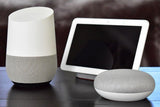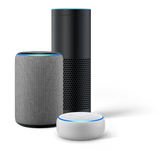Wi-Fi, Zigbee, and Z-Wave: What’s the difference?

Connectivity is something that we’ve all become so used to having, that many of us feel lost without it. With the rapid expansion of the internet of things, more and more objects are becoming connected. With so many people looking to have total control, the home automation industry is growing, and with that, so are the options for the way these smart home devices communicate. Most of us are familiar with Wi-Fi but are you as familiar with two other wireless protocols that are available? Two alternatives to Wi-Fi are Zigbee and Z-wave. Understanding the differences can be difficult, so this article will outline exactly what Zigbee and Z-wave are, and how they are different from Wi-Fi. It will also shine a light on which protocol is preferable depending on your situation.
Overview of Technologies
What is Wi-Fi?
Let’s begin with a brief description of what Wi-Fi is and how it works. You may already know, but for the sake of comparison with the other two protocols, it’ll be useful to keep in mind. Wi-Fi uses radio frequencies to provide network connectivity and operates on either a 2.4 GHz frequency or a 5 GHz frequency. Wi-Fi uses a router that creates a local network for your smart home devices. Each device on the local area connection can communicate with one another because they are on the same network. As with anything in this world, there are pros and cons to Wi-Fi. Let’s explore:
The Good
- Ubiquitous – most people already have a Wi-Fi network set up, the technology is constantly improving and is not going anywhere.
- No need for a hub – with Wi-Fi, you don’t have an extra hub for smart home devices, as the devices will communicate directly with your router.
- Cost- It’s cheaper to make a smart home device Wi-Fi compatible, which translates into savings for customers.
The Bad
- Router quality matters – When you are connecting many devices (10+), the quality of your router becomes important, and if there is a chance that your internet provider set you up with a low-quality router as it saves them money.
- Power consumption – Wi-Fi is not a low-power technology, so it requires a constant power supply, or your devices will need strong batteries.
- Crowded frequency- Having a lot of connected devices crowds the frequency, which in turn slows your connection. However, devices use the internet at different rates, and if your devices are sending infrequent small commands, it won’t affect your connection nearly as much as downloading a video would.
What is Z-wave?

Z-wave is a Wi-fi alternative that was created by Zensys and was adopted in North America in 2001 and bought by Sigma Designs. Z-wave was initially designed for businesses that needed lots of devices connected to a network, but have since moved to the consumer market due to the development and adoption of smart homes, where everyday people want more and more devices connected to their internet connection.
The Good
- Mesh network – In a mesh network, the network connection is spread out over up to 232 touch points or nodes. The nodes communicate with each other in a wave-like fashion, jumping from one node to the next. The best part about mesh networks is that the more nodes (or devices) you add, the stronger and larger your connection becomes.
- Frequency – Z-wave operates on a different frequency than Wi-Fi does, so you can add as many devices to this network as you like and it will not have an impact on your home Wi-Fi network.
- Low power consumption – Z-wave is a low-power technology, so in low-voltage applications, its batteries will last a lot longer.
The Bad
- Hub requirement – You will need a hub. There are several options you can pick to act as your Z-wave hub (prices range from $50 to $150), but it is required for your devices to communicate.
- Compatibility – Due to it being a more niche technology, Z-wave smart home products do not have as much compatibility as their Wi-Fi counterparts so you may need to come up with some workarounds for integrations.
- Dependence – Z-wave is proprietary and owned by Sigma Designs, whereas Wi-Fi is a communication standard. This means that the future of Z-wave is controlled by Sigma Designs and any changes they implement could have a drastic impact on your Z-wave products.
What is Zigbee?

Zigbee is another option for wireless communication and is similar to Z-wave. Zigbee became standardized in 2004. Like Z-wave, Zigbee targets similar applications and wants to become the communication network for your smart home.
The Good- Mesh network – Just like Z-wave, Zigbee uses a mesh network. The difference is that Zigbee can handle up to 65,000 nodes.
- Scalability – Due to its ability to handle many nodes, the scalability is unparalleled.
- Lowest power consumption – Zigbee uses even less power than Z-wave does so batteries would last longer.
- Range – The low power consumption does come at a cost, the range of Zigbee (10m) is only a third of Z-wave (35m).
- Hub requirement – Just like with Z-wave, you will need a hub.
- Security – Zigbee is also not as secure as a Z-wave or Wi-Fi-based system. Zigbee does not require active confirmation in order for a device to be paired, which leaves it vulnerable to other users getting onto your wireless protocol. Active confirmation is when you must press a button for your device to pair, and a button on your device must be pressed as well to send out the pairing signal.
- Zigbee Alliance – All devices to be certified by the Zigbee Alliance (a standardization body). Because of this extra compliance issue, it can deter some smart home manufacturers.
General Considerations
While every three options have their pros and cons, the answer to which one works for you depends on your smart home setup and what kind of control you want. Wi-Fi is great because it is accessible and smart home products are guaranteed to continue to be made compatible with it. As well, there is no additional hardware necessary. Zigbee and Z-wave are great for hosting multiple devices and not crowding your Wi-Fi connection. The key is to do your research and decide which route is best for you.




